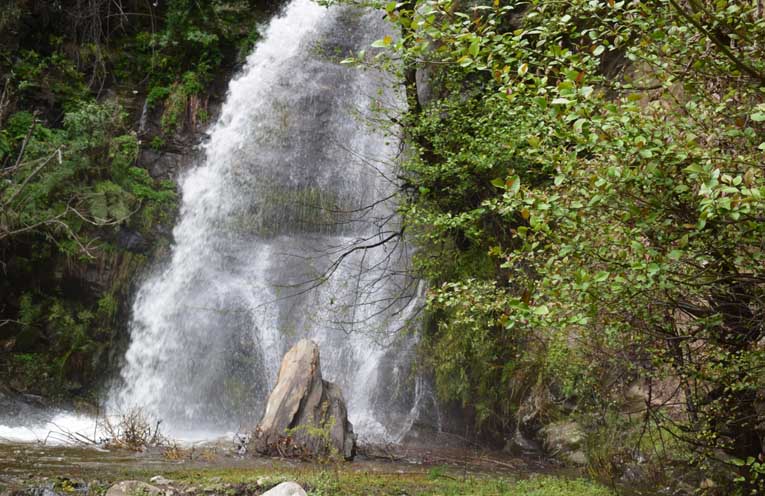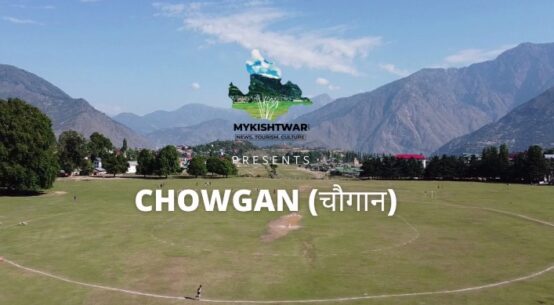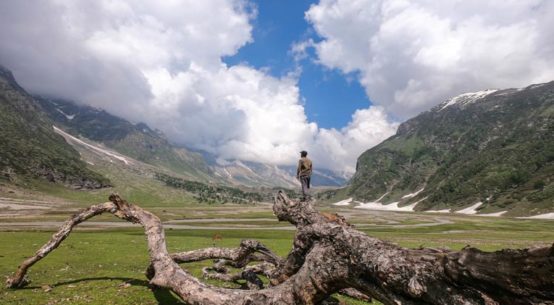
“Faith is taking the first step even when you don’t see the whole staircase”. – Martin Luther King, Jr.
Centuries ago, this faith in the unknown might have inspired the elders in Kishtwar to worship their springs. What it would yield was perhaps unfathomed then, but today it surely is evident. ‘NAAGS’ are protected areas around a spring, often associated with a local legend or myth about why the place is holy. Rituals are organized there to appease the Deity.
How it started is unknown but even today, the sacredness of the space is perceptible in the culture and beliefs of the people. Religious rituals are diverse in but people from different communities and cultural dispositions visit and worship the NAAGS. Locals organize annual pujas here on important days such as the _________ but one is free to perform any pujas whenever they wish.
The area around a Naag is protected, and there are strict rules set up by the local committee to ensure this. In most cases, the water from such a spring is used only for drinking, and laws ensure that there is no wasting or dirtying around the site. People also abstain from felling trees in the surrounding areas and often plant trees around it. No toilets are constructed and even grazing in the area above the spring is prohibited since it will lead to contamination.
Though shrouded in rituals and myths, Naags serve as an important institution to preserve springs but this is not all. On the flipside, some also believe that such strong religious sentiments may prevent any development work near the temple; this could be both a boon and a bane.
1. Godresh Naag
It is one of the oldest spring located in Kishtwar town. It is situated in Simna area in the outskirt of the city and its geographical coordinates are 33°18’49.81″N 75°47’21.39″E. As this spring is the oldest one having historical significance for its origin and water quality. It is just 5 Km away from the bus stand of Kishtwar but the water of this spring have been believed to be pristine and pure, hence no pretreatment of water is required and people use water directly from the source for drinking and other domestic needs. In J&K region, it is general perception of the people that spring water comes from a place where god Nag lived. Local people think that water comes from the NAG who is the god of spring and hindu comunaty in kishtwar worship the gudrish NAG as there KUL DEAVTA. In the winter the water of nag (Spring) become hot , local people believes that the NAG (snake) DEVTA hibernate under the spring so that water become hot by gating energy from NAG DEVATA and also believe that water become energetic. But in the mean time of summer water of nag become chilled again.
Source:- DRINKING WATER STATUS IN HIMALAYAN HILLS,
A Case Study of SPRINGS at J & K (KISHTWAR) AND UTTRAKHAND (TEHRI GARHWAL) by Vijay Sharma (Semina Colony Kishtwar) with his group.
2. Pooti Naag
From the Kishtwar town, Mandal and Chowgan, a splendid view of a waterfall on the western side, falling down the gorges of the mountains can be seen. This waterfall is a seasonal one hence you will not be able to see this whole year flowing down. When the snow at its higher reaches melts or in the rainy season, plenty of water is added to it, its roar can be heard at Kishtwar, an air-distance of about one-two kilometers.
European traveler, Fredric Drew writes about this waterfall, By going some way down the slope, we get a fair sight of it though at a distance of a mile or more. The water comes down not in one but many jumps. The aggregate height of the falls within view is about 2500 feet and above. There are a few hundred feet more which can be seen from other points. The first two falls are about 500 feet, there are conspicuous from the town. Below them two or three small ones, making of 600-700 feet more. Then there are irregular drops or cascades partly hidden by vegetation. These all measure about 2500 feet.
In this waterfall, there is every variety of movement. In the greater leaps, the water is in great volume and its roar can be heard at a distance of 2-3kms. Then it scatters into spray, again it collects and comes over the next lodge in a thick stream; in parts it divides into various lines which at a distance seen vertical immovable white threads.
In the morning sun, the spray made in the greater leaps shows prismatic colors even from a distance-a phenomenon attributed by the locals to fairies who bathe and display the strange hues of their bodies through the showers. To see the waterfall in its full play, the tourists are advised to visit Kishtwar during spring or the rainy season and enjoy the natural beauty it reveals to the beholders.
3. Gumai Naag
Gumai Naag is one of the fascinating places in our district. You must visit this place for eye-captivating scenery. It is considered very sacred. The Hindus sacrifice goats there for being protected from famine, heavy rainstorms etc and to fulfill their personnel wishes. People also take their women folk to this spring for the first bath after childbirth.
4. Petar Naag
Near Jawalapur village of Bonjwah, a giant mountain ‘Paternag’ by name stands. Amidst this mountain is a cave wherein a number of ice-lingams are formed just on the pattern of Baba Amarnath cave. The Ice-lingams are believed to be the manifestations of Lord Shiva. Previously, on the occasion of ‘Shrawan Purinima’ devotees would visit the cave for Darshan of the lingams, perform Puja and take in return, the blessings of Lord Shiva.
During drought, people would visit this place to propitiate Lord Shiva for rains which would definitely come, thus, fulfilling the desire of the local people. As ill-luck would have it, the mouth of the cave, now, stands blocked due to the huge boulders which have fallen from above the mountains.
5. Vimal Naag
Vimalnag locally called Bimalnag is an incarnation of Lord Vishnu. The idol of Lord Vishnu seated on Sheshnag, having ‘Shankh’ in one hand and ‘Chakra’ in the other hand and made of rare black stone is a source of attraction for the devotees from the times immemorial. The Vimalnag temple stands in the centre of a vast lush green and plain meadow amidst a grove of tall Deodar trees. A spring flows under neath the idol of Lord Vishnu and forms a small pond in front of the temple. The temple premises have an eye-captivating beauty and Salubrious climate. Devotees and the nature-lovers throng this place throughout the year. However, from past 3-4 years, a yatra to Vimal Nag temple is undertaken which originates from ‘Neel Kanth Mahadev Temple Kishtwar.
The annual ritual of cleansing the pond is also undertaken on the auspicious day of Naag-Panchmi which is celebrated throughout the country. Worship of serpents and springs, both associated with Lord Shiva and Vishnu is the special feature on the day of Nagapanchmi. The practice of cleansing springs and Lakes, a great characteristic of naga culture is not limited to cleaning and worshiping only, but a contribution to pollution-free atmosphere, embedded in the psych of every Indian. Pilgrims consider it auspicious to take part in the cleansing work.
To make the place more attractive for the tourists, eco friendly development activity has undertaken by the Kishtwar Development Authority. It has, as such, constructed two sheds, two view points and renovated the pond in front of the temple.
6. Abhshar Naag Ghan
The water of some springs has been channeled through stone pillars, which are called NOON in local dialect. People believe that Nouns belong to Pandav era. Mul Naag, Kund Hali, Bemar Naag, Damar Nag, Kani Naag, Arsi Naag, Teli Moche Naag and Sangram Bhata Naag are some of the important springs of Kishtwar.

